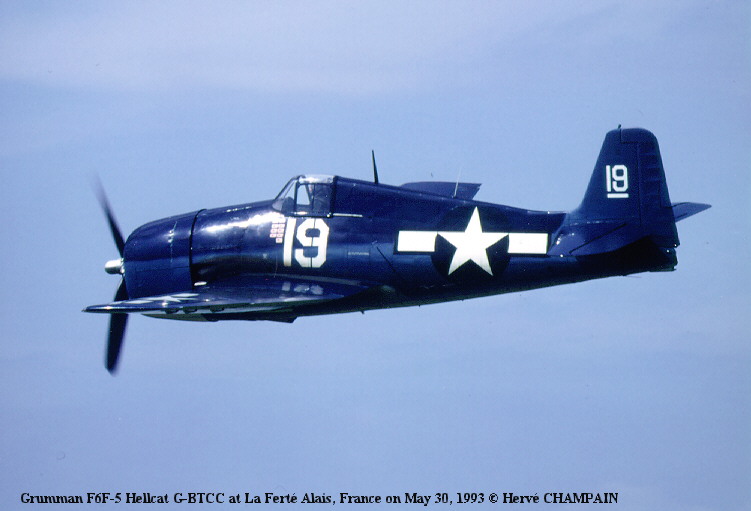|

|
The Hellcat became the U.S. Navy's most important fighter during World War II. It was credited with nearly 75% of all naval air-to-air combat kills. Although the Hellcat couldn't claim any records for speed, maneuverability, firepower, or endurance, its incredibly strong airframe helped it earn a kill-to-loss ratio of better than 19 to 1. The aircraft began its career on August 31, 1943 and was operational for only two years. During that time it succeeded in shooting down a remarkable number of enemy aircraft. The project was developed by Grumman in order to build a successor to the F4F "Wildcat". The contract for two prototypes was signed on June 30, 1941. The program went forward very quickly and the first prototype designated XF6F-1 flew on June 26, 1942. The aircraft was a large all-metal low-wing monoplane with retractable landing gear and arrester hook. It was fitted with a 1,700 hp Wright R-2600-10 engine. One month later the second prototype was produced with a more powerful Pratt & Whitney R-2800-18 engine. From the second prototype designated XF6F-3 the first production series aircraft were born. This version began leaving the assembly lines at the beginning of October 1942.
|